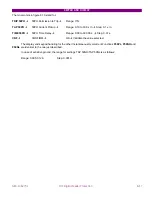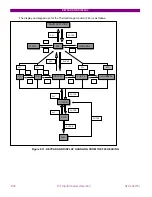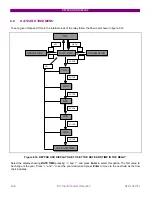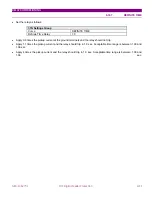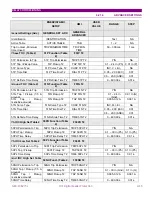
RELAY COMMISSIONING
GEK-106273L
MIF Digital Feeder Protection
9-1
9. RELAY COMMISSIONING
9.1
VISUAL INSPECTION
Unpack the relay and verify that no parts are broken and that the relay has not suffered any damage during transit.
Verify that the model number indicated on the faceplate corresponds to the model ordered.
9.2
COMMENTS ON THE TEST EQUIPMENT
All devices that work with alternating current are influenced by frequency. Since a non-sinusoidal waveform
results from a fundamental frequency wave plus a series of harmonics of this fundamental wave, it can be concluded
that devices working with alternating current (relays) are influenced by the applied waveform.
In order to correctly test relays that operate under alternating current, it is fundamental to use a sinusoidal
current and/or voltage wave. The purity of the sinusoidal wave (the lack of harmonics) cannot be expressed in a
specific form for a given relay. Each relay that is provided with tuned circuits, R-L and R-C circuits or non-linear
elements (such a inverse time overcurrent relays) will be affected by non-sinusoidal waveforms.
These relays respond to the current waveform in a different way from most AC ampere-meters. If the power
supply network that is used for the test contains a considerable amount of harmonics, the ampere-meter and relay
responses will be different.
The relays are calibrated by the manufacturer using a 50 or 60 Hz power supply network with minimum
harmonic contents. When the reception or installation tests are carried out, a power supply network with a
harmonic-free waveform must be used.
Ampere-meters and stop-watches that are used for carrying out the test must be calibrated and their accuracy
must be better than that of the relay. The power supply network used for the tests must remain stable, mainly at
levels close to the test pick-up current, as well as for the time for which the relay operates according to the curve
under test.
It is important to stress that the test accuracy depends on the power supply network conditions as well as on
the instruments used. Functional tests carried out under inappropriate power supply conditions or using inappropriate
instruments can be used for making sure that the relay works roughly correctly and, therefore, for verifying its
characteristics in an
approximate
manner.
There follows a list of tests that can be used to check that the unit is fully operational. For a more limited test for the
reception of units we recommend carrying out only the tests listed in sections: 9.5, 9.8, 9.10, 9.11, 9.12, 9.13, 9.14,
9.15, 9.16, 9.17, 9.18 and 9.19.
9.3
INSULATION TESTS
•
Progressively apply 2000 RMS volts across all the terminals of a group, short-circuited, and the case for one
second.
The independent groups on the relay are as follows:
Group 1:
A1, A2
Power Supply
Group 2:
C1 to C8
Current Transformers
Group 3:
A8, A9, A10
Contact Inputs
Group 4:
A5, A6
Trip
Group 5:
B7, B8, B9, B10, A7
Contact Outputs
In case of performing this test on all terminals at the same time, have in mind that the consumption will
increase, due to the impedance of the capacitors inside the relay, used to derive high frequency surges to
ground. The consumption will be approximately, 3 mA at 2000 Volts for each input.
Summary of Contents for GEK-106273L
Page 19: ...GETTING STARTED 1 12 MIF Digital Feeder Protection GEK 106273L ...
Page 95: ...SETTINGS 5 38 MIF Digital Feeder Protection GEK 106273L ...
Page 101: ...I O CONFIGURATION 6 44 MIF Digital Feeder Protection GEK 106273L ...
Page 127: ...KEYPAD AND DISPLAY 8 26 MIF Digital Feeder Protection GEK 106273L ...
Page 147: ...INSTALLATION AND MAINTENANCE 10 2 MIF Digital Feeder Protection GEK 106273L ...
Page 199: ...ANNEX 5 HARMONIC FILTERING 15 4 MIF Digital Feeder Protection GEK 106273L ...





